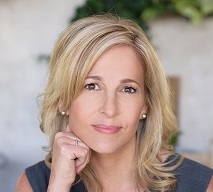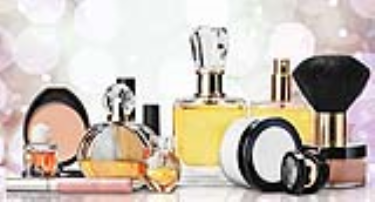Why Celebrity Fragrances No Longer Sell 6/23/2016
In 1991, Elizabeth Taylor began the celebrity fragrance phenomenon with her perfume, White Diamonds. Eager to experience the sophistication and glamour associated with the superstar, millions of women around the globe purchased the fragrance and its later spinoffs. Sensing an opportunity, fragrance manufacturers began launching perfume lines with everyone from Brittney to Beyoncé. But, beauty consumers eventually tired of this trend—since the mid-to-late 2000’s celebrity scents have been in decline. In 2011, celebrity fragrances generated $150 million in annual sales, accounting for 4% of the U.S. prestige market. By 2014, the category declined by two-thirds, plummeting to about $50.6 million and accounting for less than 2% of the $3 billion market.
Although there were a few notable celebrity fragrance launches— Parlux successfully introduced Rihanna’s RiRi last summer and Ariana Grande’s fragrance, Ari, was among the top prestige launches of 2015 ringing up an impressive $13.5 million. Today’s consumers are no longer interested in buying into someone else’s brand. They want a scent that is uniquely their own and one-in-five consumers are willing to pay more for it. In fact, industry analysts report that 2015 data confirms that sales in the fragrance category have tripled since 2013 and we don’t see this trend slowing. Research indicates younger buyers wear fragrance 3-4 times per week and 40% of those surveyed say they intend to increase their use of fragrance. Where will the growth be in 2016? Women’s Marketing looks at the emerging trends in the fragrance category.
Artistry
Consumers are prioritizing the craft of perfume-making over mass-market fragrances. Niche brands blend storytelling into both their packaging and their marketing, highlighting the artisanal qualities of the brand, ingredient quality, and the qualifications of the perfume maker. Showcasing innovation and expertise in the field though craftsmanship helps niche brands stand out.
Custom Blending
Although there are few perfumers custom blending fragrances at an affordable price point, there are a few brands offering consumers the ability to layer individual notes to create their own personalized scent. For example, the European cosmetics brand Inglot partnered with fragrance company Takasago to create The E/4 Element collection of scents that can be worn alone or blended together to create a personalized scent. On the high end, fragrance manufacturer Unique launched a program that allows users to design their own customized fragrance online. Customers choose a characteristic such as elegant or sporty, then combines up to six essences to create an individualized scent. The bottle can also be customized for a completely unique product.
Heritage Brands
Heritage brands such as Chanel, Dior, and Yves Saint Laurent are undergoing a renaissance due to their iconic status and consumers’ strong emotional ties to the brand. Scent, above all other senses, has the ability to evoke memories and trigger an emotional response. Brands can tap into this powerful connection and showcase tradition to stay relevant to the consumer.
Natural and Ethical
Researchers found that natural and ethical animal claims are among the most popular in the category. This is a reflection of increased awareness surrounding “green” initiatives and an interest in natural ingredients. Mass brands emphasizing use of organic, natural, and fair trade ingredients can also alleviate concerns around ingredient safety and fragrance allergens and concerns about skin sensitivities to fragrance.
Gender Neutral
Although 70% of new fragrance launches are aimed at women, unisex fragrances account for a larger share of new product activity. Gender neutral fragrances offer brands greater flexibility when developing new products and allow consumers the opportunity to experiment with notes not typically marketed to their gender—for example, floral notes for men or wood, leather, and smoke for women. This approach allows product developers to wade into different categories without distinguishing the product for either gender.
Lighter Options
Affordable body sprays are performing at mass due to their lighter scent profiles and ability to be layered to create a custom fragrance. Analysts found that 60% of respondents reported use of body sprays to freshen up throughout the day. Offering lighter versions of fragrance at a more affordable price point is likely to increase penetration and interest in the category.
The fragrance category is still compelling to consumers. To keep their interest, brands must develop a beauty marketing strategy that doesn’t rely on celebrities to sell products, but instead puts the consumer in the spotlight. Custom formats that go beyond gender and create a powerful emotional bond with consumers provide opportunities for brands to appeal to new and existing customers. Women’s Marketing specializes in helping emerging brands grow and succeed—contact us today to discover how we can help your brand reach its potential.
Sources: NPD Group Intense, Full-Bodied Fragrance Gaining Appeal Among U.S. Men, While Women Embrace Softer, Lighter Concentrations April 2015, NPD Group 2015 Year in Review and Trend Forecast, CEW Deep Dive: Fragrance Trends, Outlook for 2016, Women’s Wear Daily The (Un)Death of Celebrity Fragrance


Women’s Marketing is the leading media strategy, planning, and buying organization for emerging and high-growth brands. We offer a deep understanding of how women consume, engage, and take action with media, with unmatched expertise in beauty, health, fashion, food, and beverage. Every Women’s Marketing client enjoys the benefits associated with the significant purchasing scale we achieve through the vast network of companies we serve and our strong relationships with global media leaders.